The article “10 Short Stories with Morals” presents a collection of captivating narratives that carry meaningful lessons. Each story is carefully crafted to engage readers while conveying important morals and values. From tales of compassion and bravery to stories highlighting the consequences of greed and dishonesty, this compilation offers readers valuable insights and wisdom. Whether you are a child or an adult, these short stories are bound to leave a lasting impression, inspiring personal growth and self-reflection. Delve into this enriching assortment of stories that entertain and enlighten us, reminding us of the timeless wisdom found in storytelling.
1. The Ant and the Grasshopper moral story
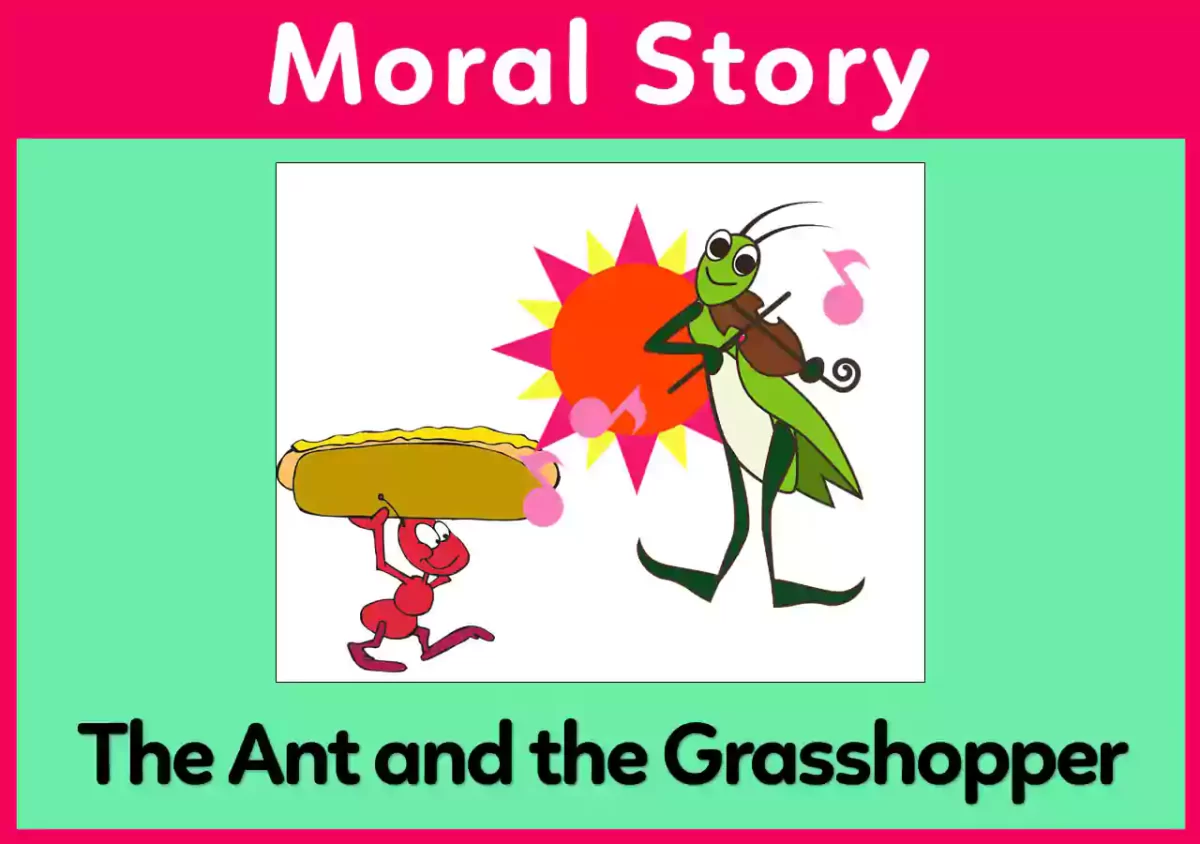
In a bustling meadow, lived a diligent ant named Andy and a carefree grasshopper named Gary. Every day, Andy toiled under the scorching sun, collecting food and storing it in his anthill for the upcoming winter. Meanwhile, Gary spent his days singing and dancing, paying no heed to the approaching change in seasons.
As autumn arrived, Andy’s anthill was filled with a bountiful harvest, ensuring he and his fellow ants would have enough food to survive the cold months ahead. Seeing the busy ants, Gary thought, “Why should I bother working so hard? There’s plenty of time to enjoy life now.”
Winter descended with a fierce chill, freezing the once lively meadow into a desolate wasteland. The grasshopper, now hungry and shivering, searched for food everywhere, but the barren land offered nothing. Exhausted and starving, he finally decided to approach Andy for help.
With empathy in his eyes, Andy welcomed Gary into the warmth of his anthill and shared his precious food. “Kindly, Andy inquired, ‘Why didn’t you prepare for winter like I did?”.
Regret filled Gary’s heart as he realized his short-sightedness. He humbly confessed, “I acted foolishly and lazily. The thought of the future never crossed my mind, and now I am facing the consequences.”
Andy’s actions had a profound impact on Gary. Witnessing the ant’s hard work and foresight made him realize the importance of planning for the future. Throughout the harsh winter, Gary helped Andy with various tasks around the anthill, learning the value of perseverance and preparation.
As spring returned and the meadow blossomed once more, Gary had transformed. He began to work alongside Andy, collecting food for the upcoming winter diligently. The two became good friends, and Gary vowed never to be careless again.
The moral of the story was clear: Work hard and prepare for the future. Like Andy, who diligently stored food, we should take proactive measures to secure our well-being and face life’s challenges with responsibility and foresight. Gary had learned this invaluable lesson, showing that even those who once disregarded the future could change and grow wiser through the right influence and experiences.
2. The Tortoise and the Hare moral story
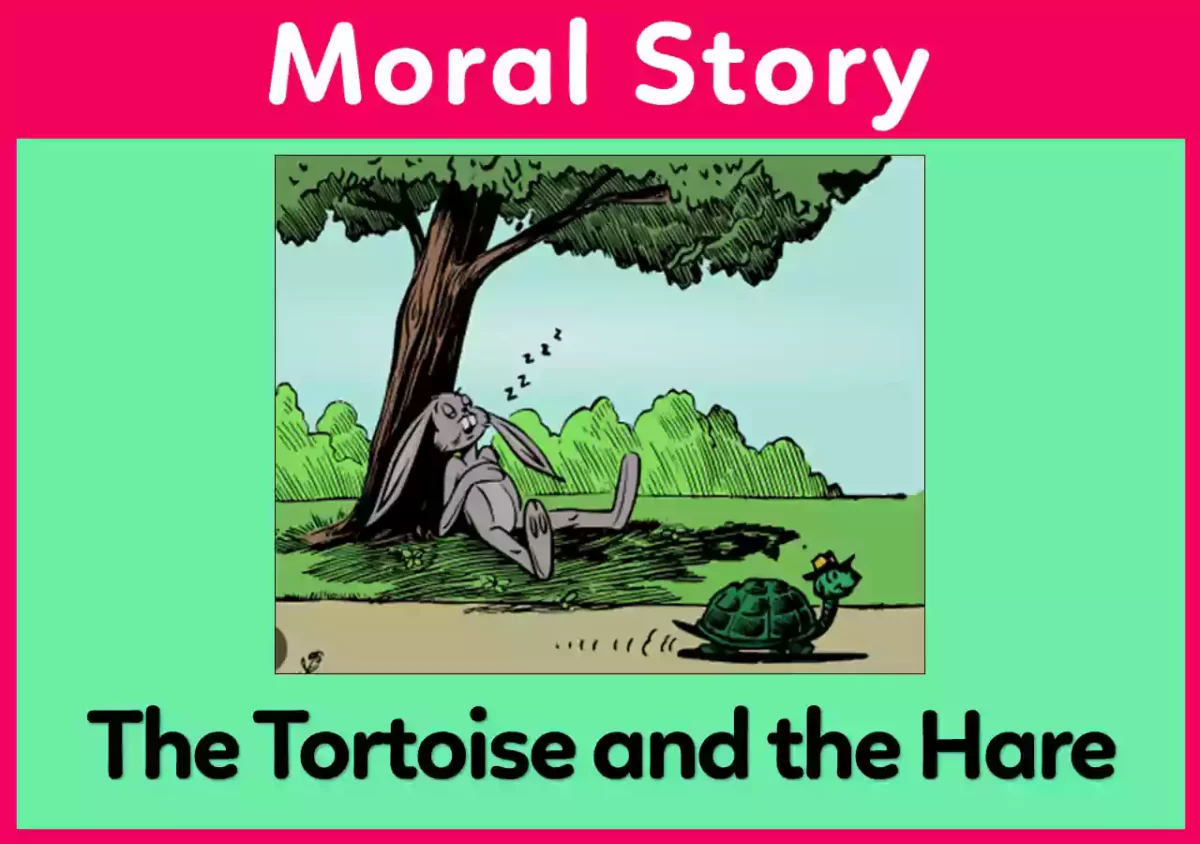
In a vibrant forest, lived two competitors known far and wide for their unique traits. The boastful Hare, known for his incredible speed, often boasted about how no one could outrun him. On the other hand, the Tortoise, steady and determined, was not as fast but was admired for his unwavering perseverance.
One sunny morning, the Hare challenged the Tortoise to a race, laughing at the thought of such a slow creature competing against his lightning-fast speed. The animals of the forest gathered to witness the spectacle.
As the race commenced, the Hare swiftly bolted ahead, leaving the Tortoise trailing far behind. Feeling overconfident, the Hare decided to take a break and rest under the shade of a tree, thinking there was ample time to finish the race later.
Meanwhile, the Tortoise continued his slow but steady pace, never losing sight of the finish line. While the Hare was dozing off, the Tortoise trudged along, motivated by the goal of completing the race.
Upon waking up and realizing how far ahead he was, the Hare rushed back into the race, but to his dismay, the Tortoise was merely a few steps away from the finish line. The Hare sprinted with all his might, but it was too late. The Tortoise crossed the finish line, claiming victory.
The cheering animals congratulated the Tortoise on his remarkable achievement. The Hare, humbled by his defeat, acknowledged his mistake. He had underestimated the power of steady effort and perseverance.
From that day on, Hare’s arrogance diminished, and he became more respectful towards others. He learned that talent and speed alone were not enough to guarantee success; it was the dedication and persistence of the Tortoise that had won the race.
The moral of the story rang true for all who heard it: Steady effort and perseverance lead to success. The tale of the Tortoise and the Hare served as a timeless reminder that consistent hard work and determination can overcome even the greatest challenges, and those who stay the course will eventually achieve their goals.
3. The Boy Who Cried Wolf moral story

In a quaint village nestled between rolling hills, lived a mischievous young boy named Jack. Jack tended his father’s sheep, a job that he found rather dull. Seeking excitement, he devised a plan to have some fun. One day, while watching the sheep graze on the green meadows, he decided to play a prank on the villagers.
In a loud voice, Jack cried out, “Wolf! Wolf! A fierce wolf is attacking the sheep!”
Hearing his distress, the villagers dropped everything and rushed to the meadow to help. However, upon reaching the flock, they found Jack laughing mischievously.
He jeered, “No wolf in sight, just me and my foolish games!”
The villagers sighed in annoyance, but they forgave him, thinking it was just a childish prank. They returned to their work, shaking their heads at the boy’s foolishness.
A few days later, Jack’s boredom resurfaced, and he decided to repeat his prank. Once again, he screamed, “Wolf! Wolf! Please come quickly! The wolf is attacking my sheep!”
Once again, the villagers rushed to the rescue, only to find Jack laughing again, reveling in the attention he received. This time, the villagers were a little more annoyed, but they let it slide, thinking that he would eventually outgrow such antics.
As weeks passed, Jack’s pranks became more frequent. Each time he called for help, the villagers came running, only to be met with his deceitful laughter. The villagers began to grow tired of his games, and their trust in him started to wane.
One day, a real wolf appeared on the outskirts of the village. This time, Jack was genuinely frightened for his sheep. With terror in his voice, he cried, “Wolf! Wolf! Please, somebody, help!”
However, this time, the villagers had grown weary of Jack’s lies. They heard his cries but chose to ignore them, believing it to be another one of his tricks.
The wolf, seeing the opportunity, attacked the sheep and scattered them in all directions. Jack’s heart sank as he watched his flock being scattered by the predator. He had lost the trust of the villagers, and now, when he needed their help the most, they turned their backs on him.
The moral of the story was evident: Honesty is crucial, as credibility can be lost through deceit. Jack’s dishonesty and love for attention had cost him dearly. His pranks had eroded the trust the villagers had in him, and when he genuinely needed help, no one believed him.
From that day on, Jack learned the value of truthfulness. He worked hard to regain the trust of the villagers, but the memory of his past deceit would always serve as a reminder of the importance of honesty in building and maintaining relationships.
4. The Fox and the Grapes moral story
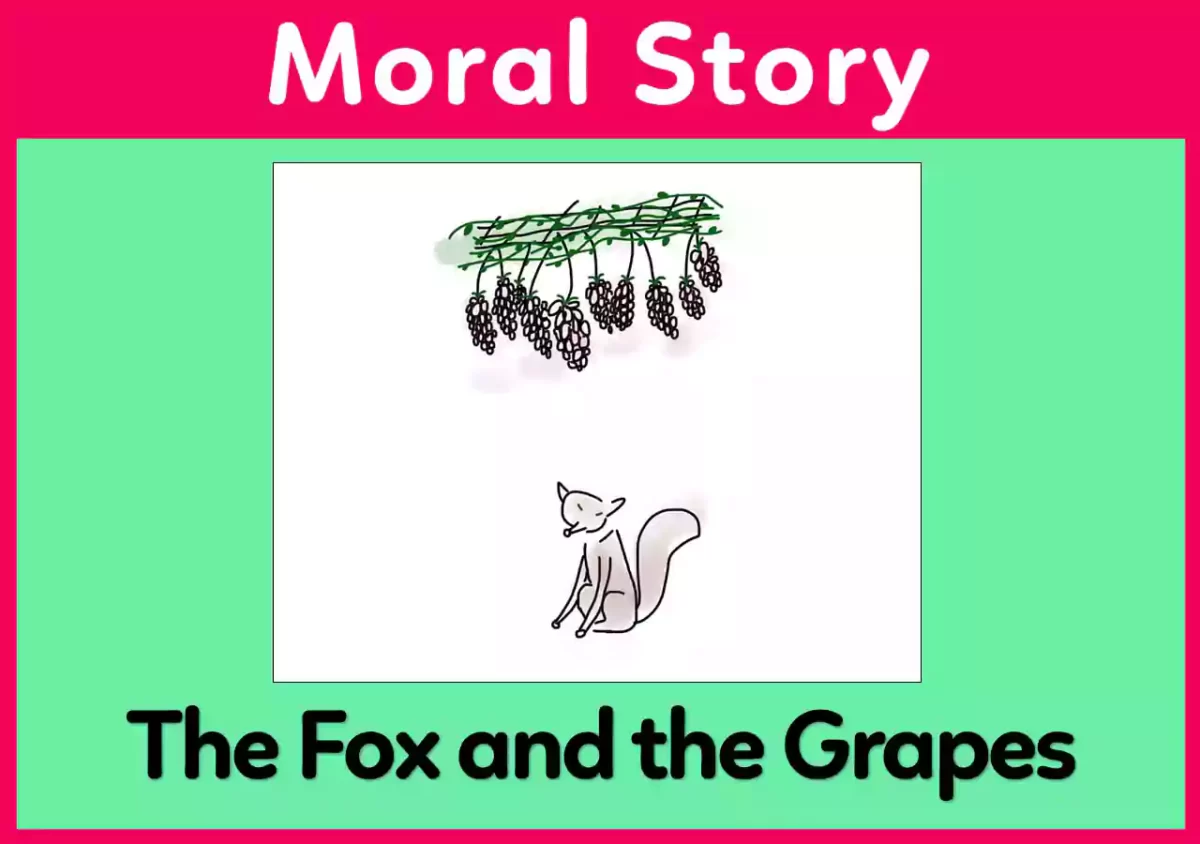
In the heart of a lush forest, a sly and cunning fox named Felix roamed about. One day, as he wandered near a vineyard, his eyes caught sight of the most succulent, ripe grapes hanging from a high trellis. The tantalizing fruits seemed so close, yet too far for the fox to reach.
Felix’s desire for the grapes grew stronger with each passing moment. He jumped and leaped, trying his best to grab the luscious treats, but the grapes remained just out of reach. Undeterred, he persisted, convinced that he would eventually succeed.
After several futile attempts, panting and exhausted, the fox finally gave up. Breathing heavily, he retreated to a nearby tree stump, feeling frustrated and disappointed. Trying to console himself, Felix muttered, “Those grapes were probably sour and unripe anyway. I didn’t want them.”
As he turned away from the vineyard, he heard a soft voice, and to his surprise, there stood an old, wise owl perched on a branch above him. The owl had been watching the fox’s endeavors all along.
“It seems you had your heart set on those grapes,” the owl said calmly.
Felix tried to hide his disappointment but admitted, “Yes, I did. But they were too high, and no matter how hard I tried, I couldn’t reach them.”
The wise owl nodded knowingly and replied, “Sometimes, the things we desire may seem out of reach, but it’s essential not to despise what we cannot have. Instead, appreciate the things we do have and find contentment in them.”
Felix listened intently to the owl’s words, reflecting on his actions. He realized that he had become so fixated on the grapes he couldn’t attain, he failed to appreciate the other blessings around him, such as the abundance of other food sources in the forest.
With a newfound understanding, Felix resolved to be more grateful and less envious. He thanked the owl for the valuable lesson and returned to his life in the forest with a changed perspective.
From that day on, whenever Felix caught a glimpse of the unreachable grapes, he reminded himself not to despise what he couldn’t have. Instead, he focused on the gifts within his grasp and found true happiness and contentment in his life.
The moral of the story was clear: Don’t despise what you cannot have. Envy and discontentment blind us to the many blessings and opportunities present in our lives. Rather than dwelling on what we lack, it is wiser to appreciate and be grateful for what we do have.
5. The Lion and the Mouse moral story
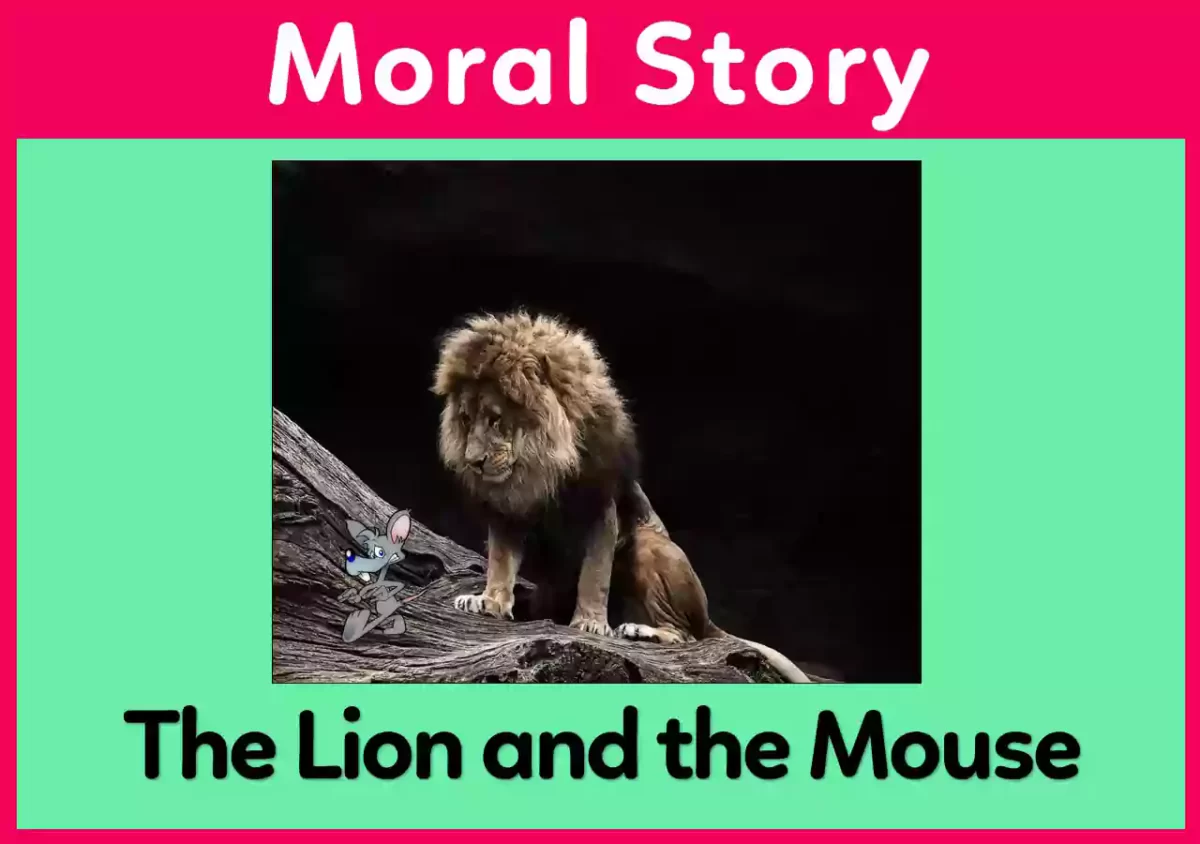
In the heart of the savannah, where the tall grass swayed in the gentle breeze, a mighty lion named Leo reigned as the king of the jungle. Leo’s powerful roars struck fear into the hearts of all the animals, and none dared to challenge him.
One sunny morning, as Leo basked in the warmth of the sun, he noticed a small creature scurrying near his massive paw. It was a tiny mouse named Milo, who had inadvertently ventured too close to the imposing lion.
“You dare to approach me, little mouse?” Leo bellowed, amused by the mouse’s audacity.
Trembling with fear, Milo quickly replied, “Forgive me, great lion! I did not mean to disturb you. I shall leave immediately.”
But Leo’s eyes glinted mischievously as he had an idea. “Oh, I shall spare you,” he said, “if you can entertain me with a joke. Something grand, to match the presence of a king!”
Milo took a deep breath, mustering all his courage, and told the lion a joke. Though it was simple, it made Leo laugh heartily, surprising both the lion and the mouse.
Pleased by the mouse’s bravery and entertained by his humor, Leo decided to spare Milo’s life. He realized that even the tiniest creatures could bring joy and value to the lives of others.
Several days later, the jungle resounded with an anguished roar. Leo had been caught in a hunter’s trap, and no matter how hard he struggled, he couldn’t break free. The animals of the jungle, fearful of the lion’s wrath, stayed away.
But not Milo. Remembering the lion’s earlier act of kindness, the little mouse hurried to the scene. Seeing Leo’s plight, Milo knew he had to help, despite his size.
Summoning all his strength, Milo gnawed at the thick ropes of the trap, little by little. With determination and perseverance, he managed to set the mighty lion free.
Leo was astonished. He had underestimated the power of the tiny creature. Grateful beyond words, the lion looked at the mouse and said, “You have saved my life, little Milo. I will never forget this kindness.”
From that day on, the lion and the mouse became the unlikeliest of friends. Leo learned that kindness is never wasted, regardless of the recipient’s size. He understood that even the smallest acts of goodwill could make a significant impact on others.
The moral of the story was evident: Kindness is a powerful force, and no act of compassion, no matter how small, is ever wasted. In times of need, those we least expect might come to our rescue, reminding us that the value of kindness knows no boundaries.
6. The Golden Goose moral story
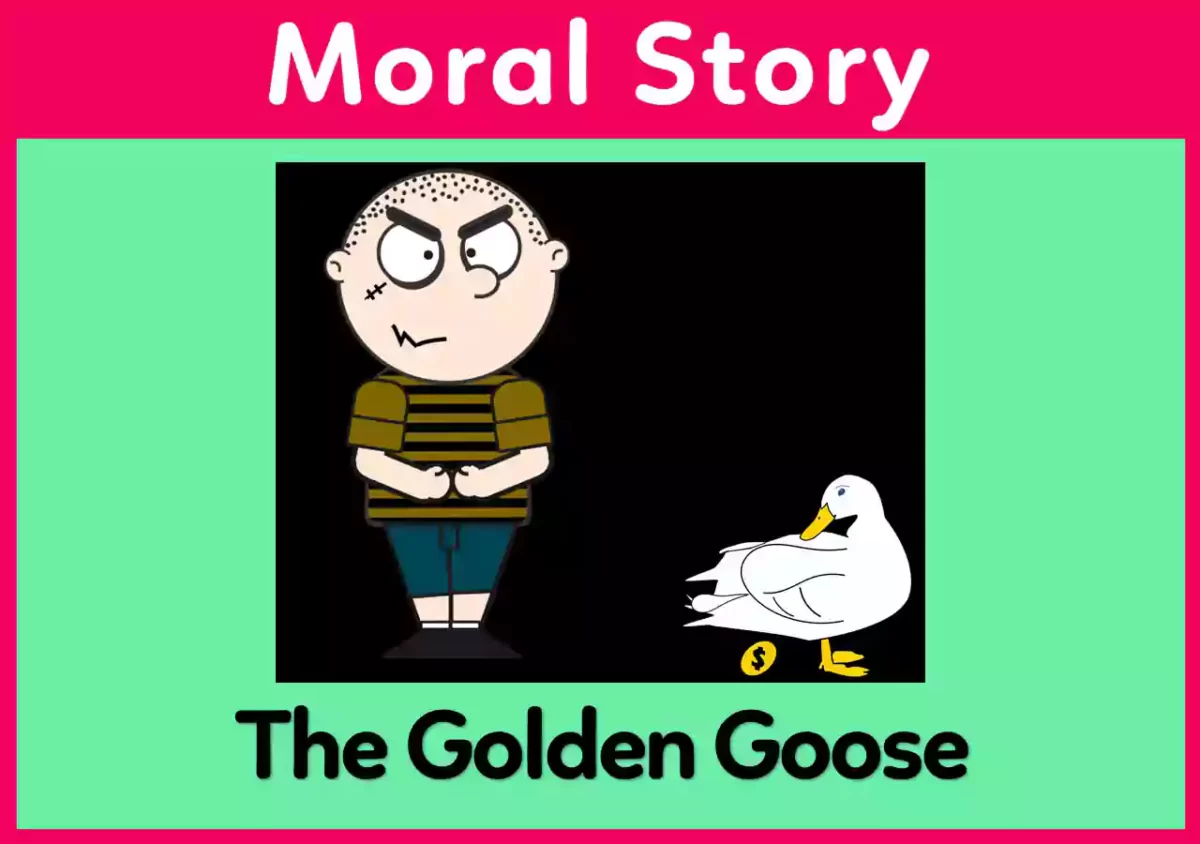
In a quaint village, there once lived a poor farmer named John. One day, while working in his fields, he stumbled upon an injured goose. To his surprise, the goose’s feathers shimmered with gold. John tended to the goose’s wounds with care and took it home.
As he sat by the hearth that evening, the goose laid a golden egg. Overwhelmed with joy, John realized he had found a magical goose that laid golden eggs. The news of his newfound fortune spread like wildfire, attracting the attention of the village.
However, John’s joy soon turned into greed. He pondered, “If one golden egg can bring me riches, why not acquire them all at once?” Consumed by impatience to become wealthy swiftly, he resolved to take all the golden eggs from the goose.
With greedy hands, he snatched the eggs from the nest, but to his dismay, they were ordinary eggs, just like any other. The magical goose, hurt by John’s greed, let out a mournful cry and flew away, never to return.
Devastated, John realized his mistake. His greed had cost him the magical goose, and he was left with nothing but regret.
As time passed, John learned the true moral of the story: Greed can lead to losing what you already have. His impatience and desire for instant wealth made him lose the magical goose and the golden eggs it could have laid for him every day.
From that day on, John worked hard on his farm, content with what he had. He understood that true wealth lay not in gold but in appreciating the blessings he already possessed. The villagers admired his newfound wisdom, and he became known for his humble and generous nature.
The story of the Golden Goose became a cautionary tale, reminding all who heard it that greed could blind one to the value of what they already had. It taught that true wealth lies in appreciating and cherishing the simple joys and blessings in life, rather than constantly pursuing material wealth without regard for what truly matters.
7. The Boy with Nails’s moral story
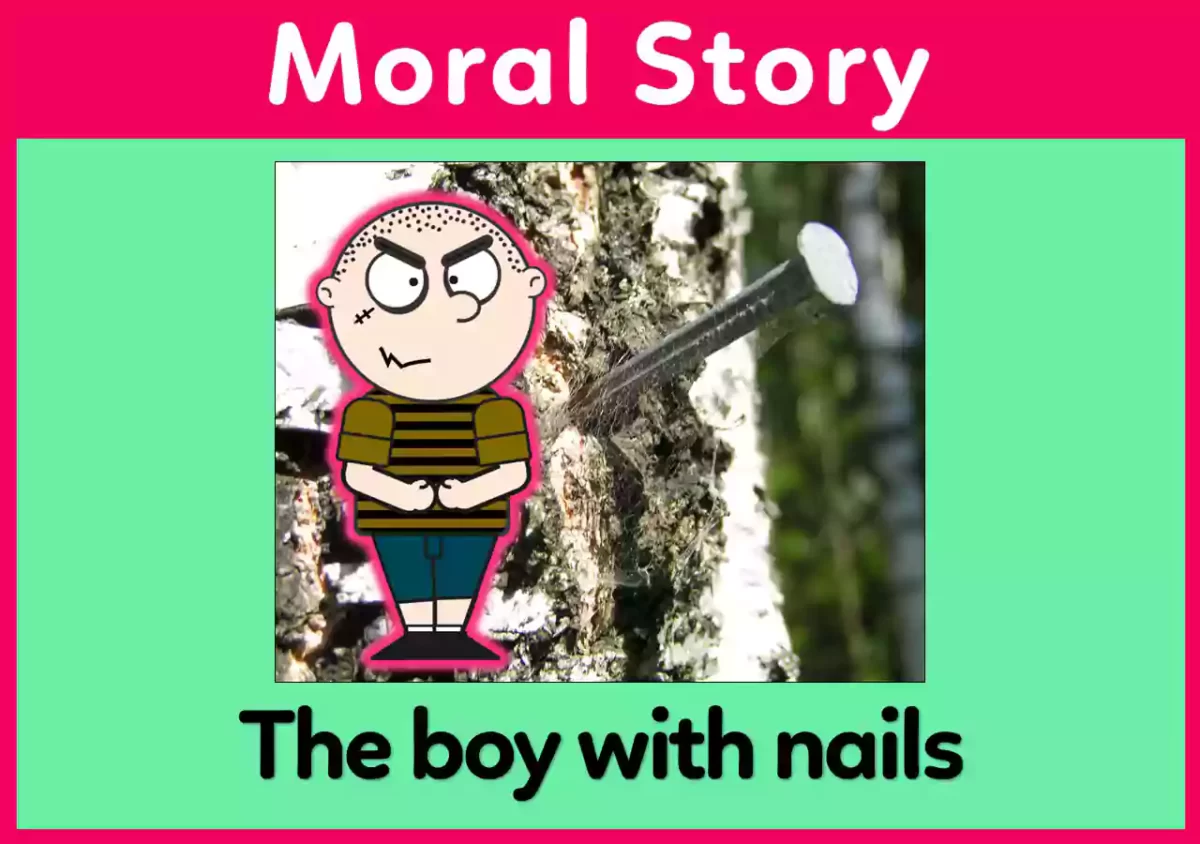
A young boy named Tim resided in a small village. Tim was known for his sharp tongue and quick temper. Whenever he felt angry or frustrated, he would lash out with hurtful words, causing pain to those around him.
One day, as he walked through the village, he saw a wise old man sitting under a tree. The old man had a bag of nails beside him. Curious, Tim approached the old man and asked, “What are you doing with those nails?”
The old man smiled kindly and said, “Each time you say something hurtful to someone, I will hammer a nail into this tree.”
With a dismissive shrug, Tim remarked, “What’s the big deal? It’s just a tree.”
The old man acknowledged with a nod and said, “Words can inflict greater pain than physical actions.” Just as these nails leave marks on the tree, your words leave scars on the hearts of others.”
Unfazed, Tim continued his day, dismissing the old man’s words as mere ramblings. As he interacted with the villagers, he couldn’t resist his hurtful remarks, often mocking or belittling others to boost his own ego.
Each time Tim spoke harshly, the old man drove a nail into the tree. Day after day, the tree became filled with nails, representing the pain caused by the boy’s hurtful words.
One evening, as the sun set on the village, Tim passed by the tree once more. To his surprise, the old man was gone, but the tree remained, adorned with countless nails.
Feeling a sense of remorse, Tim realized the weight of his actions. He could see how his words had affected the people around him. The laughter he had elicited was now replaced with sadness, and he knew he had hurt many.
Tears welled up in his eyes, and he decided to change his ways. He went to each villager, apologizing for his hurtful words and promising to be kinder and more considerate.
As the days passed, Tim made a conscious effort to be compassionate and encouraging to others. Slowly, the old man’s tree started to change. With each kind word Tim spoke, the old man pulled out a nail from the tree.
Over time, the tree became less and less burdened with nails until there were none left. The transformation was a powerful reminder of the impact words could have on others.
The moral of the story was evident: Words can hurt more than physical actions. Just as the old man’s tree bore the scars of Tim’s hurtful words, people’s hearts carry the memories of the pain caused by unkindness. Choosing to use our words to uplift and encourage others can heal wounds and foster positive relationships, leaving a lasting impact of kindness on those around us.
8. The-Emperors-New-Clothes moral story
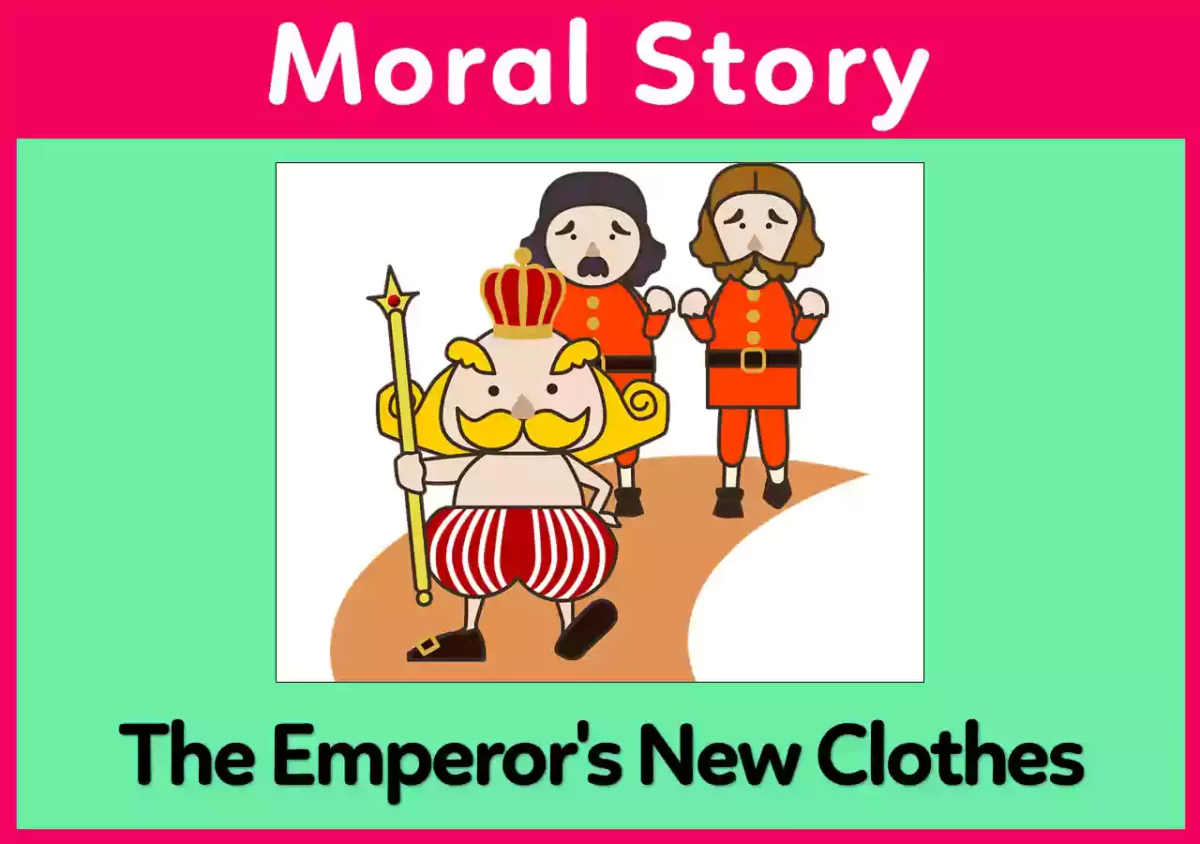
Once upon a time, in a grand kingdom, there ruled an Emperor who was known for his love of fine clothing. He spent vast amounts of the kingdom’s wealth on extravagant outfits, always wanting to wear the most exquisite and stylish garments. The Emperor’s vanity and obsession with his appearance led to a great deal of flattery from his courtiers, who feared speaking the truth.
Two cunning weavers heard of the Emperor’s obsession and saw an opportunity to deceive him. They arrived at the royal palace and claimed to possess magical skills that allowed them to weave the most exceptional fabric. They said the fabric was so extraordinary that it would be invisible to anyone who was unfit for their position or was foolish.
Intrigued by the prospect of owning such unique clothing, the Emperor eagerly commissioned the weavers to make him a suit from this extraordinary fabric. Despite the weavers pretending to work diligently, they produced nothing, for there was no magical fabric at all. Yet, they kept praising the remarkable colors and patterns of the invisible cloth.
The Emperor’s courtiers, too afraid to question the weavers’ claims, showered them with praise, afraid of being labeled unfit or foolish. The Emperor himself, eager to prove his wisdom and taste, visited the weavers to see the progress.
Upon viewing the empty looms, he couldn’t see any fabric but pretended otherwise. He feared being branded as foolish and incapable of seeing the extraordinary cloth. So, he nodded with approval, exclaiming, “Indeed, the fabric is magnificent! I must wear this during the grand procession.”
The day of the procession arrived, and the Emperor, with no clothes on, stepped out, convinced of his majestic appearance. The courtiers, fearing ridicule, chimed in, “Your attire is splendid, Your Majesty!”
But a small child, pure of heart and unaffected by the weavers’ deception, spoke the truth. “The Emperor is naked! He has no clothes on!” cried the child.
A hush fell over the crowd as they realized the truth of the child’s words. Slowly, whispers spread, and soon everyone acknowledged the Emperor’s foolishness. He had been deceived by false compliments and his own vanity.
The moral of the story was evident: Be wary of false compliments and seek the truth. The Emperor’s desire for flattery and fear of being labeled as foolish led him to believe in something that did not exist. It serves as a reminder that honest feedback and seeking the truth are essential for making wise decisions and avoiding deception.
9. The-Three-Little-Pigs moral story
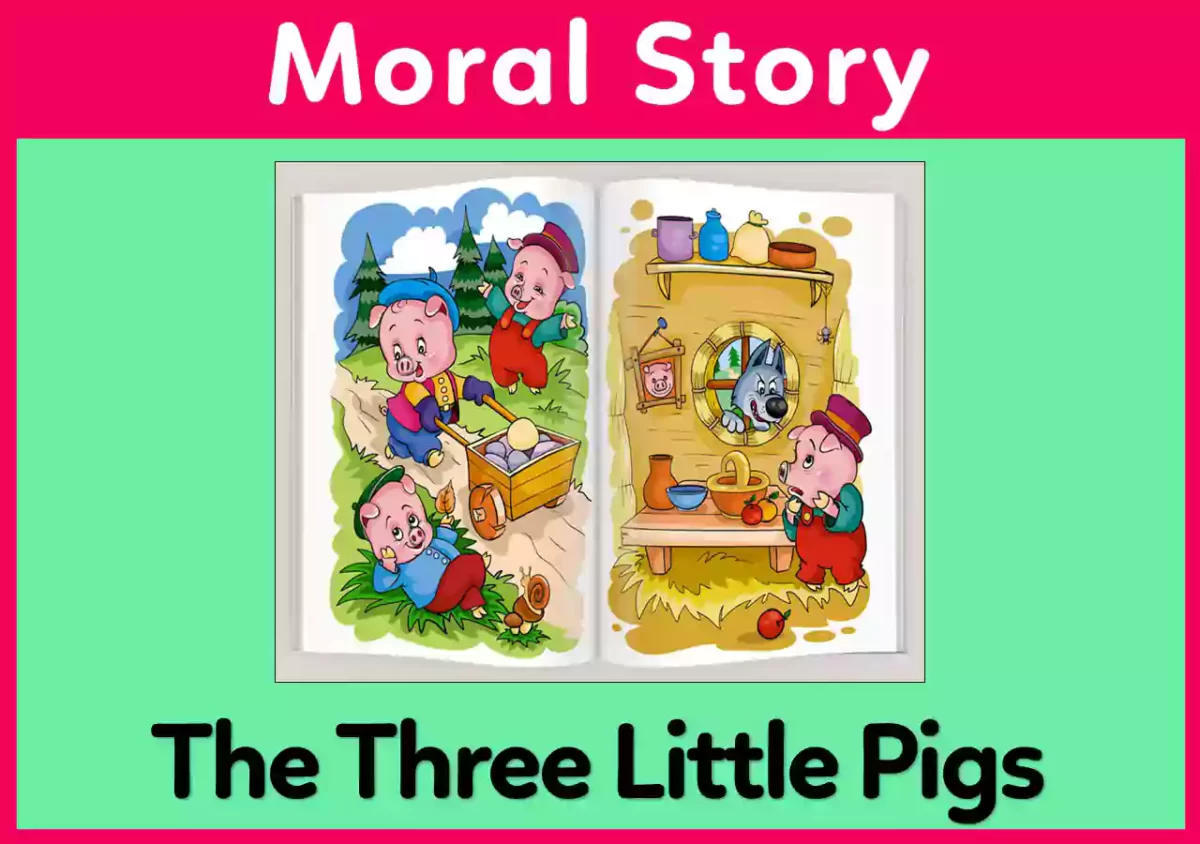
Once upon a time, in the peaceful countryside, there lived three little pigs: Larry, Peter, and Tom. Each pig was eager to build their own house and seek their fortune in the world. Larry was carefree and wanted to finish his house quickly, while Peter was more cautious and sought to create a sturdy dwelling. Tom, however, was determined to build a house that would withstand any challenge.
Larry, the first little pig, opted for the easiest route and built his house from straw. He sang and danced as he completed his hasty construction. Peter, the second little pig, chose sticks for his house. Although he took a bit more time than Larry, his primary concern was completing it quickly.
On the other hand, Tom, the third little pig, was meticulous in his planning. He knew that quality work was essential for long-term success. So, he labored diligently, using strong bricks to build a solid and robust house.
One day, a menacing wolf entered the forest. Hungry and seeking an easy meal, he spotted the three little pigs and set his sights on their homes. He approached Larry’s straw house, and with a mighty huff and puff, he blew it down in an instant. Larry scampered to Peter’s stick house for refuge.
The wolf followed closely and, using his powerful breath, blew down Peter’s house too. Both Larry and Peter rushed to Tom’s brick house, seeking safety from the ferocious wolf.
As the wolf arrived at Tom’s house, he huffed and puffed with all his might, but the sturdy bricks held firm. Frustrated, the wolf hatched a cunning plan. He chose to enter the house through the chimney.
Inside the house, Tom and his brothers heard the wolf’s scheming and took quick action. Tom lit a fire in the fireplace, and when the wolf tried to slide down the chimney, he landed directly into the burning embers. Yelping in pain, the wolf quickly retreated and disappeared into the forest, never to be seen again.
The three little pigs learned a valuable lesson that day. Larry and Peter realized that taking shortcuts and rushing through their work led to disaster. On the other hand, Tom’s commitment to quality work saved their lives and secured their future.
The moral of the story was evident: Quality work is essential for long-term success. Tom’s dedication and attention to detail in building his house from bricks exemplified the importance of investing time and effort in creating something solid and dependable. The tale of the Three Little Pigs serves as a timeless reminder that taking shortcuts and neglecting the quality of one’s work can lead to dire consequences, while diligence and dedication yield rewarding outcomes.
10. The Fisherman and the Businessman moral story
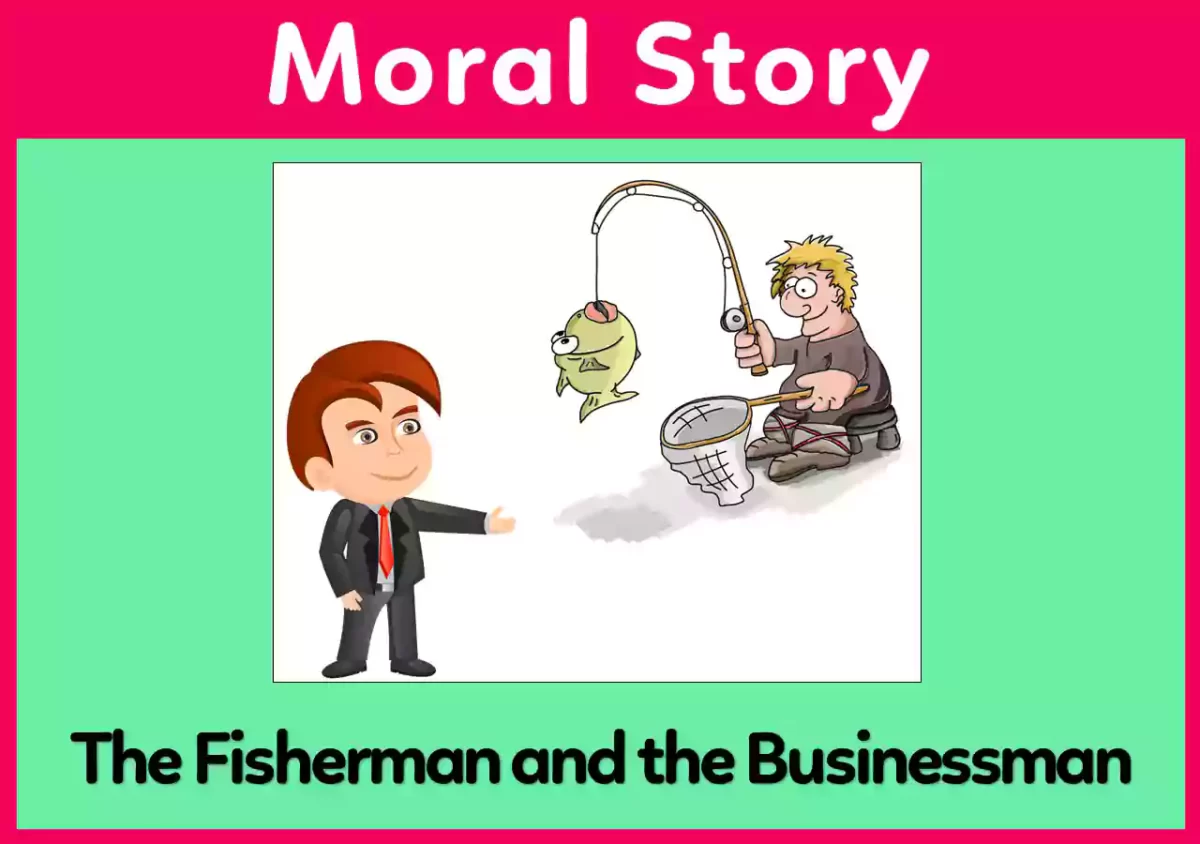
In a picturesque coastal village, there lived a wise fisherman named Sam. Every day, he set out in his little fishing boat, casting his net into the deep blue sea. Sam was content with his simple life, catching enough fish to feed his family and selling the surplus at the village market.
One day, as the sun set over the horizon, Sam noticed a flashy yacht docking near the shore. Out stepped a wealthy businessman named Robert, impeccably dressed in a suit and carrying a briefcase. Intrigued by the serene beauty of the village, Robert struck up a conversation with Sam.
“Fisherman,” Robert asked, “how long does it take you to catch all these fish?”
“With a smile, Sam replied, ‘Just a few hours each day. The sea is generous, providing for my family’s needs.'”
Robert was taken aback, and he said, “Why not invest more time fishing to catch more fish and increase your earnings? You could expand your business, hire others to work with you, and become wealthy!”
Sam listened attentively but replied, “I have enough to sustain my family and myself. I cherish the time I have with them and the tranquility of my life. Wealth is not my primary goal.”
Unsatisfied with Sam’s response, Robert persisted, “You don’t understand! With more money, you can buy luxurious houses, and fancy cars, and enjoy a life of comfort!”
Though tempted, Sam pondered Robert’s words. However, he realized that true happiness was not solely dependent on material possessions. He cherished the simple joys of his life—the gentle breeze, the laughter of his family, and the satisfaction of an honest day’s work.
Despite Robert’s insistence, Sam chose to remain content with his way of life. Instead of chasing wealth, he continued to find happiness in the everyday moments that brought him peace and fulfillment.
As the days passed, Robert grew restless in the village. The constant pursuit of material wealth consumed him, leaving little time for relaxation or joy. He seldom took breaks, always seeking more business ventures and wealth.
One evening, as the village basked in a beautiful sunset, Robert sat by the shore, feeling empty and unsatisfied. He watched Sam, who had just returned from fishing, laughing with his family, and a sense of envy crept into Robert’s heart.
He realized that despite his wealth and success, he lacked the genuine happiness that Sam had in abundance. Robert had sacrificed his peace and contentment for material possessions, leaving him feeling unfulfilled.
As he prepared to leave the village, Robert approached Sam and said, “You were right, fisherman. Sometimes, simplicity and contentment are better than the constant pursuit of material wealth. Your life may be modest, but it’s filled with genuine joy, something I’ve yet to find.”
With that, Robert bid farewell to the village, taking with him a valuable lesson learned from the wise fisherman.
The moral of the story was clear: Sometimes, simplicity and contentment are better than the constant pursuit of material wealth. Sam’s life exemplified the beauty of finding happiness in the simple pleasures of life, while Robert’s journey taught him that the relentless pursuit of riches could lead to a hollow and unfulfilled existence. The tale served as a reminder that true wealth lies not in material possessions but in appreciating life’s precious moments and finding contentment in the present.
Conclusion
“10 Short Stories with Morals” is a treasure trove of wisdom and life lessons. Through these captivating narratives, readers have the opportunity to immerse themselves in a world of imagination while gaining valuable insights. The morals embedded in each story serve as guiding beacons, encouraging us to embrace kindness, empathy, and integrity in our daily lives. As we reflect on the characters’ journeys, we are reminded of the power of storytelling to shape our perspectives and influence our actions. Whether shared with young minds to instill essential values or enjoyed by adults seeking moments of contemplation, these stories offer a timeless and profound impact. “10 Short Stories with Morals” celebrates the beauty of storytelling, inspiring us to live purposefully and with compassion, making this collection a true gem to cherish and revisit.
FAQ
What is the content of the article “10 Short Stories with Morals”?
The article presents a collection of 10 short stories with morals.
How are the stories in the article crafted?
The stories are carefully crafted to engage readers and convey meaningful lessons.
What kind of lessons do these short stories convey?
The short stories highlight morals and values such as compassion, bravery, and honesty.
Who can benefit from reading these stories?
Both children and adults can benefit from reading these stories.
How do these stories impact the readers?
The stories leave a lasting impression, inspiring personal growth and self-reflection.
Why are morals and values important in storytelling?
Morals and values in storytelling guide readers toward better choices and perspectives.